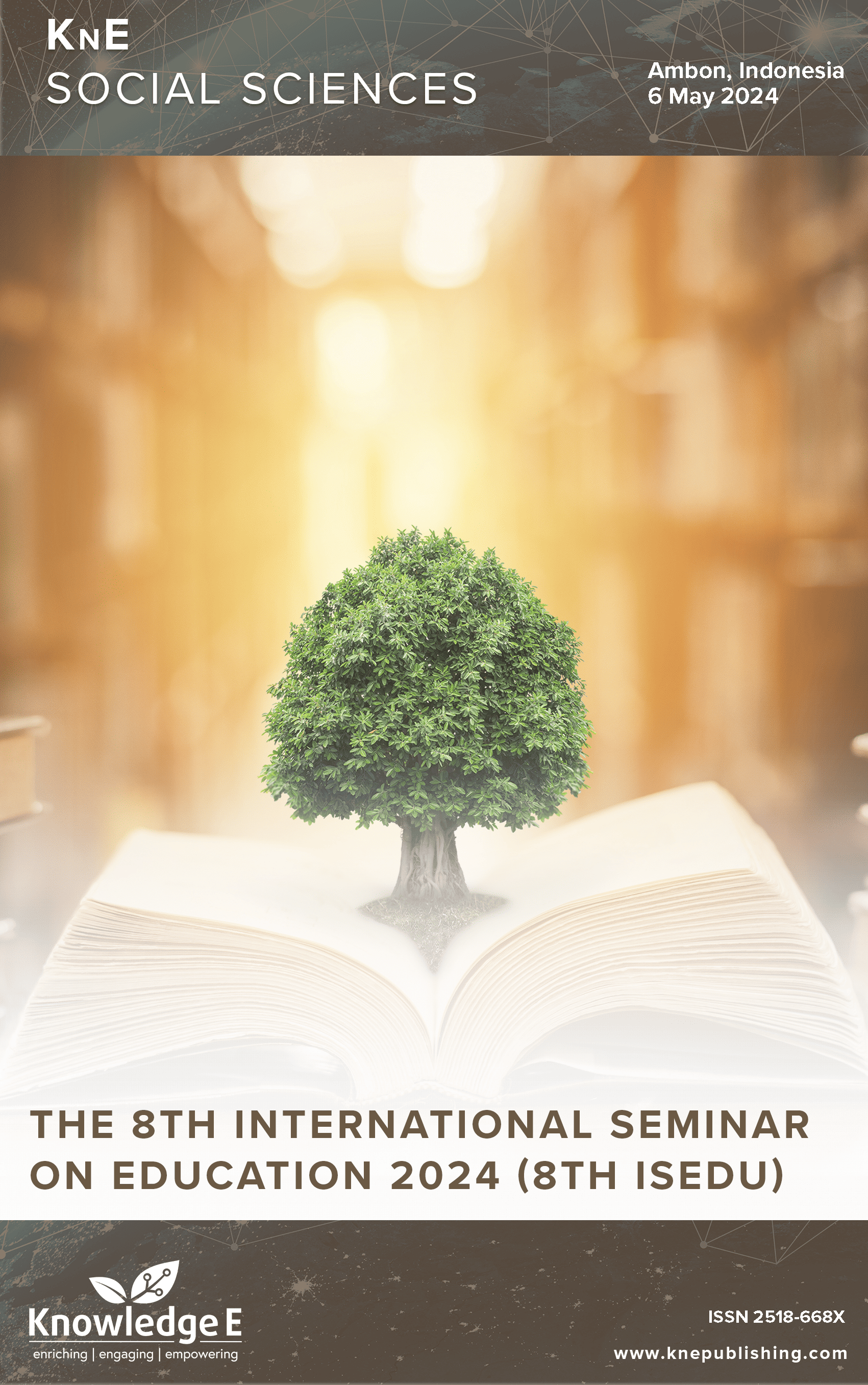Optimizing Volleyball Bottom Passing Skills: Unveiling the Impact of the STAD Learning Model on Learning Outcomes
DOI:
https://doi.org/10.18502/kss.v9i31.17568Abstract
The study focused on improving the lower passing skills of 8th-grade female students at SMP Negeri 6 Sumedang in volleyball. Recognizing the significance of passing in enhancing team attacks and overall match performance, the researcher employed the student teams achievement division (STAD) learning model to address existing skill deficiencies. The research identified common issues in lower passing execution, including imperfect movement stages, improper ball contact in the hands, ball deviation from the intended target, and an inability to control the ball’s direction. The results indicated a positive impact, with a significant increase in the lower passing skills observed during the volleyball underpassing tests. The t-test results, with T_count = 16.4 > T_table = 1.725, demonstrated a statistically significant improvement, confirming that the STAD learning model contributed to enhanced learning outcomes. In summary, the research concluded that the application of the STAD learning model positively influenced the learning outcomes related to lower passing skills in volleyball among 8th-grade female students at SMP Negeri 6 Sumedang. The findings emphasized the efficacy of employing cooperative learning strategies, such as STAD, to address specific skill challenges in sports education.
Keywords: STAD, bottom passing, volleyball
References
Habyarimana JD, Tugirumukiza E, Zhou K. Physical education and sports: A backbone of the entire community in the twenty-first century. Int J Environ Res Public Health. 2022 Jun;19(12):7296. DOI: https://doi.org/10.3390/ijerph19127296
Chirikov I, Semenova T, Maloshonok N, Bettinger E, Kizilcec RF. Online education platforms scale college STEM instruction with equivalent learning outcomes at lower cost. Sci Adv. 2020 Apr;6(15):eaay5324. https://doi.org/10.1126/sciadv.aay5324. DOI: https://doi.org/10.1126/sciadv.aay5324
Ho IM, Cheong KY, Weldon A. Predicting student satisfaction of emergency remote learning in higher education during COVID-19 using machine learning techniques. PLoS One. 2021 Apr;16(4):e0249423. DOI: https://doi.org/10.1371/journal.pone.0249423
Sudargini Y, Purwanto A. The effect of teachers pedagogic competency on the learning outcomes of students. J Ind Eng Manag Res. 2020;1(4):1–8.
Utami I, Burhanuddin S, Sahabuddin S. Implementation of a scientific approach using problem based learning (PBL) models to improve learning outcomes of overhand pass in volleyball game. Compet J Pendidik Kepelatihan Olahraga. 2022;14(1):115– 34. DOI: https://doi.org/10.26858/cjpko.v14i1.32521
Firman F, Mirnawati M, Sukirman S, Aswar N. The relationship between student learning types and Indonesian language learning achievement in FTIK IAIN Palopo Students. J Konsepsi. 2020;9(1):1–12.
Dewi V, Febrian E, Effendi N, Anwar M. Financial literacy among the millennial generation: relationships between knowledge, skills, attitude, and behavior. Australas Accounting. Bus Financ J. 2020;14(4):24–37. DOI: https://doi.org/10.14453/aabfj.v14i4.3
Jariono G, Fachrezzy F, Nugroho H. Application of Jigsaw Type Cooperative Learning Model to Improving the Physical Exercise Students Volleyball at Junior High School 1 Sajoanging. J Res Business. Econ Educ. 2020;2(5):1019–26. DOI: https://doi.org/10.51601/ijersc.v2i1.22
Mustoip S, Al Ghozali MI, Fadhlullah MZF, Assenhaji SAY. Influence of Introverted and Extroverted Personalities on English Learning Interaction for Elementary School Students. Elsya J English Lang Stud. 2024;6(1). DOI: https://doi.org/10.31849/elsya.v6i1.14291
Herman CH. Group work that works: peer-assisted learning in large ensemble classrooms. Music Educators J. 2022;109(1):52–9. DOI: https://doi.org/10.1177/00274321221115417
Causton J, MacLeod K. From behaving to belonging: The inclusive art of supporting students who challenge us. ASCD; 2020.
García-Taibo O, Ferriz Valero A, Boned-Gómez S, Baena-Morales S. Effects of cooperative learning on gender equality education in university students. 2024; https://doi.org/10.47197/retos.v54.103491. DOI: https://doi.org/10.47197/retos.v54.103491
Langegård U, Kiani K, Nielsen SJ, Svensson PA. Nursing students’ experiences of a pedagogical transition from campus learning to distance learning using digital tools. BMC Nurs. 2021 Jan;20(1):23. DOI: https://doi.org/10.1186/s12912-021-00542-1
Lailiyah M, Setiyaningsih LA, Wediyantoro PL, Yustisia KK. Assessing an effective collaboration in higher education: A study of students’ experiences and challenges on group collaboration. EnJourMe (English J Merdeka). Cult Lang Teach English. 2021;6(2):152–62. DOI: https://doi.org/10.26905/enjourme.v6i2.6971
Takko M, Jamaluddin R, Kadir SA, Ismail N, Abdullah A, Khamis A. Enhancing higherorder thinking skills among home science students: the effect of cooperative learning student teams-achievement divisions (STAD) module. Int J Learn Teach Educ Res. 2020;19(7):204–24. DOI: https://doi.org/10.26803/ijlter.19.7.12
Abd Mokmin AU, Bungsu J, Shahrill M. Improving the performance and knowledge retention of aircraft maintenance engineering students in the theory of flight through STAD cooperative learning. ASEAN J Sci Eng Educ. 2023;3(2):149–62.
Carless D. From teacher transmission of information to student feedback literacy: activating the learner role in feedback processes. Active Learn High Educ. 2022;23(2):143–53. DOI: https://doi.org/10.1177/1469787420945845
Lakkala S, Galkienė A, Navaitienė J, Cierpiałowska T, Tomecek S, Uusiautti S. Teachers supporting students in collaborative ways—An analysis of collaborative work creating supportive learning environments for every student in a school: cases from Austria, Finland, Lithuania, and Poland. Sustainability (Basel). 2021;13(5):2804. DOI: https://doi.org/10.3390/su13052804

